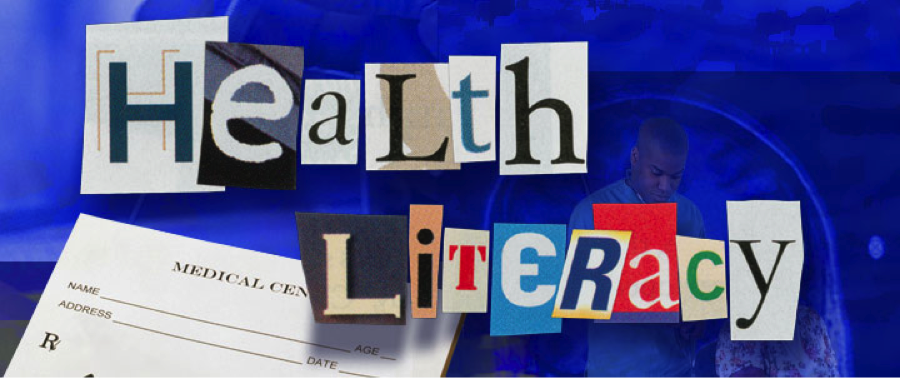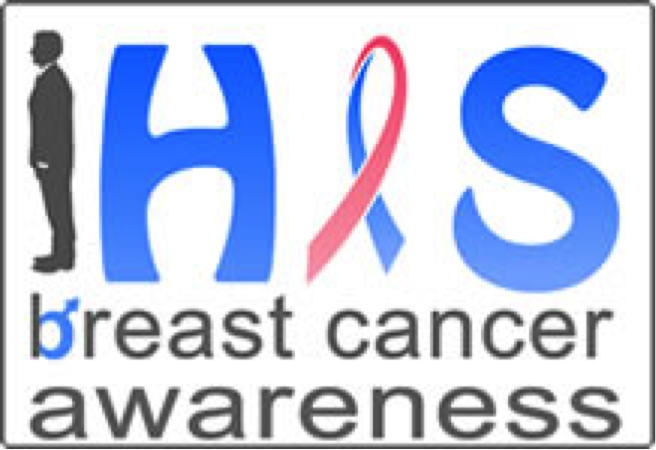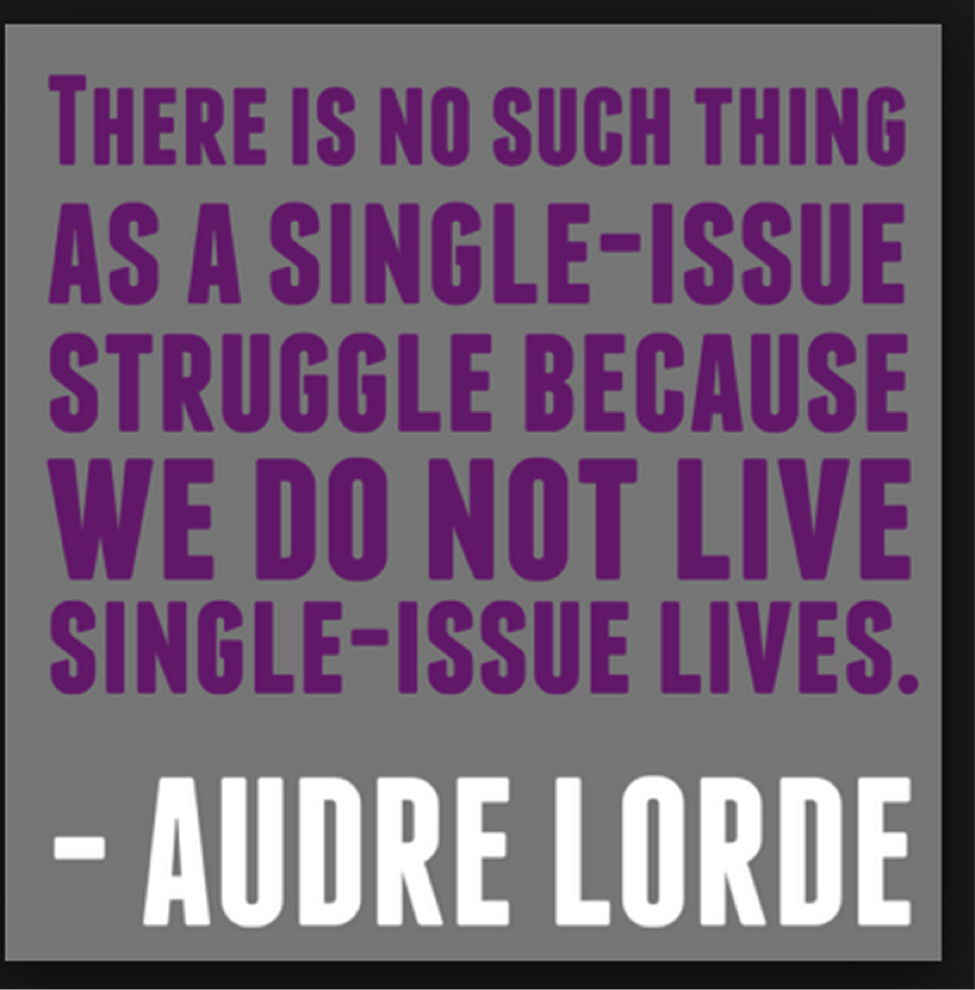myHIN Blog
Category: Health Articles

March 20, 2014
College-Age Generation and the Affordable Care Act (ObamaCare)
In February 2014, @myhealthimpact and @medicalmentors held a Twitter chat (#MedTechImpact) to discuss the importance of the Affordable Care Act (#ACA)for the college-aged population. The chat included experts from the Congressional Black Caucus Foundation, Howard University, Booz Allen Hamilton and the Maryland County Department of Health and Human Services.

Topics included: common misconceptions about the Affordable Care Act; finding #ACA online information; why should college students and the college-age population have health care coverage; advantages and disadvantages of the Act. We also discussed how the Act encourages workforce development diversity among medical and health providers as well as information and computing technologists.
The infographic below can be found on the myhealthimpactnetwork.org site and/or here directly and lists some key facts regarding the #ACA. The word cloud shows the keywords from the chat including students, health, college, join, patient and tech. As discussed during the Twitter chat and shown in the infographic, the #ACA will:
- Enable young people to stay on their parents’ health insurance until age 26.
- Provide coverage for preventive care.
- Provide preventive care and screenings for #HIV, #depression, #diabetes and many others.
- Provide care even for those with pre-existing conditions.
The final day to register for health coverage is March 31, 2014. #GetCovered. Check out the details for yourself. Inform. Educate and empower yourself. See https://www.healthcare.gov/young-adults/

Share

March 06, 2014
The TURN UP: Spring Break Safety
With Spring Break literally around the corner, college students everywhere, and I mean EVERYWHERE are gearing up to travel to distance and tropical places to soak up some sun and jump in the water. While most students are only concentrating on getting that last minute workout in for washboards abs or purchasing their last minute wardrobe findings, I guarantee no one is thinking about STDs!
Instead, most college students are thinking about fun, alcohol and parties. Don’t get me wrong, nothing is wrong with having fun and of course making lifetime memories, BUT be SMART about it! Don’t forget about your morals and values, or should I say “home training”. Have “responsible” fun. Yes, spring break is about having a good time and getting away from the books, but don’t be naive.
Drink Responsibly
 Personally, do yourself a favor and party smart. Pace yourself if you choose to drink, and avoid hard alcohol if you can or other drinks that are powerful and have fast effects—cause drunks make for “easy targets”.
Personally, do yourself a favor and party smart. Pace yourself if you choose to drink, and avoid hard alcohol if you can or other drinks that are powerful and have fast effects—cause drunks make for “easy targets”.
According to a study by the University of Wisconsin, 75 percent of college males and 43 percent of females reported being intoxicated on a daily basis during spring break. Which brings me to another point of discussion; don’t let alcohol blur the lines of love! There is no such thing as “I want to get to know you” or “love at first sight” during spring break! Just lust, deceitful lies, and sexual transmitted diseases! So, be smart and not STUPID!
Stay Safe: Safe Sex, Know Your Facts and Know Your Status
The only 100% sure way to prevent sexually transmitted diseases is by not having sex. If you choose to have sex with a stranger—which isn’t best idea—use something called “condoms”. We are college students, so this should not be hard. Stock up on protection before you leave home so you never find yourself in a compromised situation. If this isn’t enough for you, here are the facts: Women are more likely to be victims of sexual violence than men. Women who experience both sexual and physical abuse are significantly more likely to have sexually transmitted diseases. Take precautions and avoid situations or persons that may place you at risk for harm. Decide before even going on spring break what you’re willing to do, and then get to work setting your boundaries early and often. If you meet someone and decide to shack up, be up front with him or her if sex isn’t in the plan. Maybe something like, “Hey good lookin’. I’ve had fun this evening, but no sex tonight.” But seriously, don’t ever let anyone talk you into doing something you’re uncomfortable with.
Keep Safe and Hang With Your Friends
Lastly, “if you go out with your friends, go home with your friends.” It’s one of those things that keeps you a whole lot safer, and eliminates the bad, ugly, and stupid drama. This way you can look out for one another, and get a friend home who is too intoxicated to be out. So this spring break, think a little bit before you act! I’m sure that one week of fun is not worth your life! Don’t turn up too much, so that you look like a fool!
Share

March 06, 2014
Are Sexual Transmitted Diseases (STD’s) still a taboo subject?
Sexually Transmitted Diseases, STDs, have become a topic of discussion that many people feel uncomfortable talking about and try not to think about them, hoping they will go away. As of now there are more than 25 diseases that are transmitted sexually. The organisms, which can cause these diseases usually, enter the body through mucous membranes—such as the surfaces of the vagina, urethra, anus, and mouth.
Listing of Common STDs
How are Sexual Transmitted Diseases (STDs) Caught?
Sexually transmitted diseases can be caught through intimate contact with someone who is infected, especially during oral, anal, or vaginal sex. However, some infections are also transmitted nonsexually. Sexually active college-age men and women are at the highest risk for contracting STDs. With that said, it is important for college students to use protection and get tested regularly.
Symptoms of STDs can be unnoticeable and can lead to more issues if not treated. As adults, it is our responsibility to stay educated on the topic of STDs and continue to utilize health institutions for help and guidance.
If that isn’t enough motivation for you, below are some examples of STDs and images of their effects. I hope this information gives you the courage to help spread the awareness of this issue and practice safe sex, as well as, getting tested.
Pictures of Common STDs




Share

February 27, 2014
Condoms Don’t Protect From Everything
Some people think they know everything there is to know about sexually transmitted diseases. The possibility of catching gonorrhea, syphilis, or even HIV is a scary thought- but some have that perception that they won’t catch anything. Maybe you wear condoms during sexual intercourse so you think that you’re good and have nothing to worry about, right? Well, I must inform you that condoms don’t protect from everything. Even some of the most elite individuals in society are walking around with sexually transmitted diseases. Yes- this is not a joke.
Did You Know Condoms Have a Fail Rate?
Statistics show that condoms have an annual 11% fail rate. Not so safe as you imagined after all… Even when condoms are used, they do not fully protect from sexually transmitted diseases that are passed by skin-to-skin contact. Just this statement alone opens the door for many diseases to walk in and take residence in your body if you are not careful.
Here are some tips you can use in order to lower your risk of catching an STD:
1. Get Tested. Use STD Testing to Know Your Status!
This may sound like an obvious answer but there are still so many people who do not know their std status. I will admit that you fear what you do not know. Having a close friend to go get tested with you can help eliminate that fear you have. That “what if” question will continue to linger until you make the decision to know you status for yourself. We have a specific area on the myHealthImpact website where you can type in your zip code and you will be informed of testing locations that are close to you.
2: Know the Safe Sex Facts For Yourself
There are so many resources available that will provide information on safe sex and sexually transmitted diseases. Saying that you were not informed anymore can no longer be an excuse. Sometimes you have to take the initiative to seek out information for yourself. Ultimately, how can you inform someone about STDs if you don’t know about them yourself?
3. Abstinence.
This is something that the younger generation doesn’t hear a lot about anymore. The media is constantly portraying sex in advertisements, song lyrics and online which makes it seem acceptable. Remaining abstinent until marriage is the only way you will be able to know your status for sure. You don’t run the risk of catching a sexually transmitted disease or early parenthood. This may seem challenging but it is possible. Make a promise to yourself that you will honor and protect your body. Anytime you find yourself being tempted, remember that promise you made to yourself. It will be worth the wait for that special someone.

These diseases are REAL people. While all sexually transmitted diseases don’t lead to death, some of them do. Whether you continue to have sex before marriage or wait until marriage is totally up to you. Whatever you decide, I encourage you to be safe. While condoms do protect from some STDs, they don’t protect from everything. Just keep that in mind.
Share

February 16, 2014
Smart Condoms: Could These Be The Best Condoms Created to Date?
As we all know condoms do not prevent all sexual transmitted diseases (STDs) and sexual transmitted infections (STIs) during sex. Well why not build a better condom. Last November the Bill and Melinda Gates foundation received over 812 entries for the “Build-a-better-condom” competition. A reported 11 entries received a grant of $100,000 to produce their condoms and hopefully bridge the gap for condom innovation. This is where tech meets health.
Talk about a smart condoms. Some of these entries range from polymer based composite materials to biologically engineering material for a “significant enhancement for male pleasure.” These “next-gen” condoms may be what consumers are looking for when taking safe sex more seriously.
Developer Lakshminarayanan Ragupathy from Trivandrum, India, has an entry named “The warm embrace”, which incorporates composites for high heat transfer, but also drugs that would enhance safety. Not only is his design super thin and strong, it’s also very flexible.
Now here’s a question, how much would you pay for a condom that you couldn’t feel and worked 99.99% of the time?
Follow us at tumblr.myhealthimpactnetwork.org (Tumblr)
Follow us on twitter: @myhealthimpact
Share

January 16, 2014
5 Ways to Create a Healthy Lifestyle
With the New Year, I wanted to create a healthy lifestyle I could maintain throughout the year. It is important to set yourself up for success with a clear mind and body. With that said, I developed 5 easy ways to create a healthy lifestyle.
1. Exercise Daily
If you want to live well and live longer, you must exercise! Try to exercise at least 30 minutes a day. Whether it’s going to a gym class on campus or going on a jog at your local park, there are plenty of ways to incorporate exercise in our daily routines. Try walking to class instead of taking the bus, or joining an intramural sport team. Studies show that just 10 minutes of exercise makes a difference—so do something!
2. Be a picky eater!
Set yourself up for success! Think about planning a healthy diet as a number of small, manageable steps rather than one big drastic change.
Focus on finding foods you love and easy recipes that incorporate a few fresh ingredients.
Eat in moderation. Moderation means eating less than we do now. It doesn’t mean you eliminate the things that you love. Just try to eat more healthy things than unhealthy ones. Also think smaller portions. For example, when dining out, choose a starter instead of an entree, split a dish with a friend, and don’t supersize anything. When at home, use smaller plates, think about serving sizes and start small.
Eat breakfast! Eating fruits and whole grains in the morning can help jumpstart your metabolism and energy for the day.
Avoid eating at night! Try to set a time where don’t eat after. Eating late at during a time when you are less active, can cause weight gain and create unhealthy habits. Studies show that after-dinner snacks tend to be high in fat and calories. So avoid them!
3. Get a good night’s sleep
Keep a regular sleep schedule. Set a regular bedtime and wake up at the same time every day. Nap to make up for lost sleep, but make sure to be smart about napping. While napping can help you recharge, it can also create bad habits when it comes to your sleep cycles. Lastly, create a relaxing sleep environment. Make your room more sleep friendly. Keep the noise down, keep your room cool, and make sure that your bed is comfortable!
4. Keep Healthy Relationships
The healthiest people are those who have relationships with other healthy people. Healthy relationships reduce stress, unhealthy habits, and help motivate you to succeed and do better. Surround yourself with people who are going to uplift you and make you feel better about yourself. Having a strong foundation is essential to life.
5. Give yourself a break!
Find fun activities for you to do to relieve stress! Go to the movies or go shopping. Create new hobbies. Hang out with your friends. Do anything that makes you feel happy. It’s important for you to take a break from life’s stresses and create awesome memories.
Follow us at tumblr.myhealthimpactnetwork.org (Tumblr)
Follow us on twitter @myhealthimpact
Share

December 12, 2013
The Key to Getting Tested.. HIV/Aids Awareness
I never knew that I had an interest in HIV/AIDS awareness and informing my community until my friend, Julian, and I went to get tested. If I could briefly remind and reminisce on that moment, we went to get tested on a Friday afternoon, most of the time campus is pretty deserted on Fridays, as it was on this day. We went into the room where the testing was being provided, and I could literally count on one and a half hands how many people I saw coming to get tested. Though I was still caught up in my own nerves, I was saddened and actually amazed that that room was not overflowing of people. To this day, I am still unable to fully understand why it wasn’t full of people. From that day, I decided that it is my goal to encourage people to get tested and to care about their sexual health.

I decided to go with one of my close friends here on campus but it’s absolutely nothing wrong with taking someone you don’t know that well; your suitemate, a co-worker, or even a study buddy. Take who makes you feel comfortable and if that’s someone you just know in passing, do it. It isn’t so much about whom you take with you but actually going and having that moral support. In my opinion, taking someone with you to go get tested alleviates the stress that comes with the whole situation. You have someone with you that shares some of the exact same feelings, from excited to scared and from nervous to even anxious. It’s ok to be scared momentarily together but in the end you’ll be aware of your status together.
Going with someone helps combat the stigma behind going to get tested for HIV and other STDs. You’re showing yourself and your testing buddy that it’s perfectly fine and normal to get tested. Go get tested. Break the walls of this stigma with a testing buddy.
Share

October 21, 2013
Health Literacy?
Health Literacy is defined as the degree to which individuals have the capacity to obtain, process, and understand basic health information and services needed to make appropriate health decisions. It requires a complex group of reading, listening, analytical, and decision-making skills, and the ability to apply these skills to health situations. For example, it includes the ability to understand instructions on prescription drug bottles, appointment slips, medical education brochures, doctor's directions and consent forms, and the ability to negotiate complex health care systems. When patients are faced with complex information and treatment decisions, there are specific tasks that should be carried out to ensure that one is getting the best treatment possible. Those tasks include:
• Evaluating information for credibility and quality
• Analyzing relative risks and benefits
• Calculating dosages
• Interpreting test results
• Locating health information.

In order to accomplish these tasks, individuals may need to be:
• Visually literate
• Computer literate
• Information literate
• Numerically or computationally literate
• Oral language skills are important as well.
In addition to that, it is important for patients to articulate their health concerns and describe their symptoms accurately. They need to ask pertinent questions, and they need to understand spoken medical advice or treatment directions. In an age of shared responsibility between physician and patient for health care, patients need strong decision-making skills.
Next time you visit your local physician, make sure you are practicing and carrying out these tasks. It is important for patients to receive the best care possible, as well as, know how to make accurate decisions when it comes to healthcare.
Follow us on Tumblr tumblr.myhealthimpactnetwork.org
Follow us on Twitter @myhealthimpact
Share

October 21, 2013
Breast Cancer: Study Results, Causes, and Health Literacy
When thinking about breast cancer, many people automatically shift their focus to women. In particular, women within the African American community. Studies have shown that breast cancer is more common in white women than African American women. In all actuality, men are also susceptible to breast cancer. Just like women, men do have breast tissue, which has the possibility of developing breast cancer.
I was pretty surprised when I learned of this news. From my research, the exact cause of breast cancer is not known. Even though there is no exact cause, the risk of getting breast cancer increases with age. Factors such as family history and alcohol usage also increase the possibility of getting breast cancer. For males, the most cases for breast cancer have been detected between ages 60- 70. Overall, a male’s risk of obtaining breast cancer is only 1%. Though this percentage is fairly low, this doesn’t completely eliminate the possibility for men.
In terms of health literacy, everyone needs to be knowledgeable about breast cancer. Having this knowledge base can help improve the quality of life by recognizing the signs early and seeking treatment if necessary. Knowing that breast cancer is 100 times more likely in women than men, this encourages me to consistently check on the women in my life. It is my duty to ensure that they are going to get mammograms and maintaining a healthy lifestyle. Just knowing about breast cancer isn’t enough. Being proactive in your efforts can help save lives.

Follow us on Tumblr tumblr.myhealthimpactnetwork.org
Follow us on Twitter @myhealthimpact
Share

July 14, 2013
Representations of Black Womanhood: Implications in Health
Miami University
Doctoral Candidate
The prevalence of chronic disease for African Americans is substantially higher than their white counterparts. According the National Health Statistics African Americans had higher rates of hypertension, diabetes, and obesity (U.S. Department of Health and Human Services [HHS], 2010). In addition to having a greater risk for chronic disease African Americans experience more complications and endure greater rates of mortality. Although current data indicates that there have been improvements in mortality rates, life expectancy, and disease prevalence, disparities between the races are still substantial.
In the United States data on health disparities is rarely presented in an intersectional manner, edifying race, class, and gender (Kawachi, Daniels, and Robinson, 2005). It is through the use of controlling black female images that the interpellation occurs and health disparities are perpetuated. When individuals connect with images and do not engage them critically we allow dominant hegemonic representations to colonize our minds, shaping our assumptions about ourselves and others (Gauntlett, 2002). The connection between how black women were viewed and the implications it might have on health policy, health education, and individual interaction with the healthcare system has never been directly addressed in health disparity literature. Researchers tend to focus on issues of access emphasizing availability of adequate health insurance, culturally competent healthcare providers, and medical centers (Smedley, 2003). While, addressing issues of access is an important component in reducing health disparities controlling for these factors health disparities still remain.

Controlling for variables such as income, health insurance, and access provides minimal impact on the health of African Americans when matched to white counterparts, so the question must be asked, “why do black women have so many health problems relating to obesity, diabetes, and heart disease?” What part does racist and classist ideological beliefs have on health outcomes? Focusing on the short-comings of health education in regards to enacting positive change in minority communities brings one to the study of black female images. It is through these images that black female identity is viewed and formed, shaping intra-personal and interpersonal development and interaction. The intrapersonal deals with the psychology of the individual delving into how identity and self concept is conceived, and this is important for understanding of how the individual may view self, which provides insight into potential motivations for self-care.
The construction and perpetual use of misrepresentations of black womanhood has left an indelible mark on the American healthcare system. As an African American female the relegation to subservient and deviant roles is assured; for the female staring as the jezebel or the mammy is the best that can be expected. Reiterations of these representations play out on the news, television shows, magazine covers, and movies. Visual, auditory, and social text displaying these controlling images almost seem inescapable. Text provides a specific discourse about race, class, gender, and sexuality, and while the viewer is able to pick and choose the text that he are she interacts with the process of mediating the messages that are received is not entirely possible. Living in a perpetuate world of performance due to the white gaze African Americans loss ‘self’ taking on the embodiment of the oppressor’s image of other. This internalization of mammy or jezebel requires the African American woman to perform her ascribed role. The role of the mammy as it relates to self-care does not allow space for the black woman to acknowledge her mental or physical health. The role of the mammy is to care for the needs of others and sacrifice herself for the good of others. The jezebel on the other hand has no real regard for her health or that of anyone else. Her function is to seek pleasure and satisfy her temporal desires. Both images construct identities disconnected from self in the sense that one is unable to be attuned with what is needed to become and remain well. Likewise, many of the other representations of black womanhood suffer from this lack of attunement due to being conflations of old representations of slavery, reclaimed oppressive images, or images constructed in binary opposition to hegemonic representations of white superiority.
Resolving health disparities becomes far more than simply providing education and access, it hinges on identifying racism and acknowledging the cultural and political power that racist images and narratives have in our social ecological spheres (Shavers, 2006; Sanders-Phillips et. al.). Understanding the intentions and motivations behind health behaviors of the marginalized comes with deep exploration of those oppressing acts and representations that serve to colonize and recolonize (Speight, 2007). A stripping away of oppressor hegemonic cultural narratives must be undertaken and empowered counternarratives constructed from more authentic afrocentric spaces must occur.

Follow us on Tumblr tumblr.myhealthimpactnetwork.org
Follow us on Twitter @myhealthimpact
Share
Page 6 of 7 pages ‹ First < 4 5 6 7 >
In Partnership with: Poole College of Management, College of Humanities and Social Sciences, National Science Foundation, Penn State
Take Action, Get Tested: Find Your Local Testing Center Why Get Tested?

